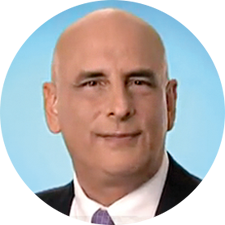Until recently, coaches felt the most pressure to be responsible for the athlete’s condition. The responsibility should be assumed by everyone involved, despite a conflict of interest among all parties wrestling with the strong desire to play versus remaining on the bench.

The biggest concern I have about concussions is the conflict of interest virtually everybody has with wanting the athlete to play as soon as possible instead allowing enough time and healing to occur.
There needs to be a cultural shift to protect the athletes’ well-being long-term, instead of rushing the athlete to gameplay assuming the athlete ‘will be fine.’
Harry Kerasidis, M.D. "The Brain Doctor"
It’s impossible to self-diagnose a concussion because judgment can be impaired whether or not they want to go back in the game. Although the severity of the hit can be a factor, other factors may induce concussions with less violent hits to the head.
Today’s equipment have increased the “risk compensation” among athletes in contact sports. With shoulder pads and helmets, athletes are virtually weaponized and capable of causing significant injury. We need to:
Continue seeking to enhance the safety of helmets.
Assure the helmets fit properly.
Aggressively monitor, enforce and adjust rules to protect the brain.
Every team needs to have a “concussion coordinator” responsible for carrying out a complete, “end-to-end,” protocol throughout the season or school year.
Although it’s a huge step forward for concussion awareness, most states’ concussion legislation do not give specifics on how to comply with the law, concussion prevention, detection and concussion management. Also, the education is required, but the state laws loosely monitor and enforce how the education is delivered. Unfortunately, most individuals just need to sign a document -- whether or not they’ve received the training.
Additionally, much of the burden is placed on the coaches to comply, and all-involved parties need to be educated.
| NFL Protocol | ImPACT Test | Concussion Vital Signs | XLNTbrain | |
|---|---|---|---|---|
|
Downloadable and fully customizable Policies and Procedures Document |
Emergency Action Plan |
|||
|
State Legislation Compliant Online Educational Activity |
||||
|
Online Baseline Testing |
||||
|
Preseason compliance tracking and reporting |
||||
|
Mobile XLNTbrain Sideline Assessment Tool |
Not integrated |
Not integrated |
Limited, not integrated |
|
|
Mobile Balance Test |
Available as an extra charge add on, not integrated |
|||
|
Concussion incident reporting |
Limited |
|||
|
Email alerts with notification and post-concussion instructions going to athletes, parents, and healthcare providers upon concussion reporting |
||||
|
Symptom checklist reporting and tracking |
Available as an extra charge add on, not integrated |
|||
|
Concussion Recovery Tracker with 5 Step Progressive Exertion |
||||
|
Academic Care Plan generation based on symptoms |